FMP

Affirm Holdings, Inc.
AFRM
NASDAQ
Affirm Holdings, Inc. operates a platform for digital and mobile-first commerce in the United States and Canada. The company's platform includes point-of-sale payment solution for consumers, merchant commerce solutions, and a consumer-focused app. Its payments network and partnership with an originating bank, enables consumers to pay for a purchase over time with terms ranging from one to forty-eight months. As of June 30, 2021, the company had approximately 29,000 merchants integrated on its platform covering small businesses, large enterprises, direct-to-consumer brands, brick-and-mortar stores, and companies. Its merchants represent a range of industries, including sporting goods and outdoors, furniture and homewares, travel, apparel, accessories, consumer electronics, and jewelry. The company was founded in 2012 and is headquartered in San Francisco, California.
52.34 USD
2.59 (4.95%)
DuPont Analysis
The DuPont analysis, pioneered by the DuPont Corporation, offers a structured approach to assessing fundamental performance. It involves breaking down the return on equity (ROE) into various components, aiding investors in comprehending the factors influencing a company's returns.
ROE = Net Income / Average Total Equity
ROE = (Net Income / Sales) * (Revenue / Average Total Assets) * (Average Total Assets / Average Total Equity)
The company's tax burden is (Net income ÷ Pretax profit). This is the proportion of the company's profits retained after paying income taxes. [NI/EBT] The company's interest burden is (Pretax income ÷ EBIT). This will be 1.00 for a firm with no debt or financial leverage. [EBT/EBIT] The company's operating income margin or return on sales (ROS) is (EBIT ÷ Revenue). This is the operating income per dollar of sales. [EBIT/Revenue] The company's asset turnover (ATO) is (Revenue ÷ Average Total Assets). The company's equity multiplier is (Average Total Assets ÷ Average Total Equity). This is a measure of financial leverage. Profitability (measured by profit margin) Asset efficiency (measured by asset turnover) Financial leverage (measured by equity multiplier)